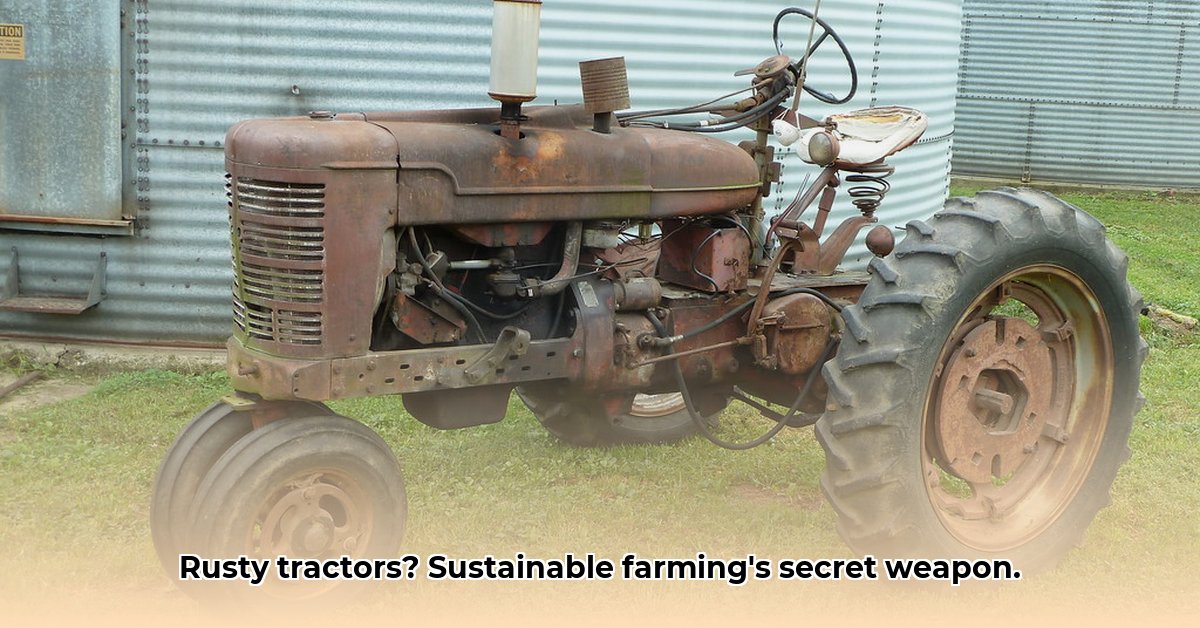
Rusty Old Tractors: Sustainable Farming's Hidden Gem
Ever heard the satisfying rumble of a vintage tractor? Imagine the smell of freshly turned earth, a connection to generations of farmers. That’s the magic of restoring old farm equipment – and it’s more important than ever. This isn't just nostalgia; it's about building a more sustainable future for agriculture. Restoring vintage tractors offers surprising economic and environmental benefits, making them a smart choice in today's world. This article will explore the process, highlighting the advantages, challenges, and actionable steps to participate in this rewarding endeavor. Need parts? Check out this helpful resource for used tractor rims.
Unearthing the Potential: Why Restore Old Tractors?
Why breathe new life into these seemingly obsolete machines? The economic advantages are significant. Restoring a vintage tractor typically costs considerably less than buying new, making it an attractive option for small-scale farmers or those on a budget. It also promotes resourcefulness; we're repurposing existing materials instead of demanding new ones, reducing environmental impact.
But the environmental benefits are even more compelling. Older, pre-diesel tractors often have a smaller carbon footprint than modern counterparts. While perhaps less fuel-efficient in terms of power output per gallon, their significantly lower emissions offset this. Restoring these machines minimizes the environmental burden of manufacturing new equipment, contributing to a circular economy. Isn't it fascinating how a seemingly simple act of restoration aligns so perfectly with sustainable practices?
The Challenges: Navigating the Restoration Process
The path to reviving a rusty old tractor is rarely straightforward. A major hurdle is parts sourcing, as many older tractors use obsolete parts. This requires creativity and resourcefulness, utilizing online communities, salvage yards, or even 3D printing. Another challenge lies in the specialized skills required: mechanics, welding, and fabrication. While online resources abound, mastering these skills takes time and dedication. Finally, integrating vintage machines into modern farming operations may require careful planning and modifications.
Success Stories: Turning Rust into Functionality
Despite the challenges, many successful restorations showcase the feasibility and rewards. One Iowa farmer painstakingly restored a 1940s Allis-Chalmers, transforming it into a reliable workhorse on his organic farm. A Maine community collaborated, pooling resources and skills to revive a fleet of vintage tractors. These examples demonstrate the potential for individual and collective action in promoting sustainable farming and preserving agricultural history.
Taking Action: Your Role in the Revival
What can you do? Here are actionable steps:
- Join the Community: Network with enthusiasts, mechanics, and farmers through online forums and local clubs.
- Invest in Training: Seek workshops, courses, or mentorship to develop necessary skills.
- Support Local Businesses: Patronize businesses specializing in vintage tractor parts and restoration.
- Advocate for Policy Changes: Support policies incentivizing vintage equipment restoration (e.g., tax breaks).
- Educate and Inspire: Share your knowledge and passion with others, inspiring sustainable farming practices.
Assessing the Risks: A Realistic Perspective
While the benefits are significant, potential risks must be acknowledged:
| Risk Factor | Severity | Mitigation Strategies |
|---|---|---|
| Parts Sourcing | High | Online communities, 3D printing, reproduction parts, salvage |
| Specialized Skills | Medium | Training programs, mentorship, apprenticeships |
| Integration with Modern Systems | Low | Careful planning, adaptive technologies |
Looking Ahead: The Future of Vintage Tractors
The future holds promising potential. Ongoing research explores the long-term economic and environmental impacts of using restored tractors, informing future policies. Collaboration among farmers, manufacturers, researchers, and policymakers is essential for ensuring the viability and sustainability of this practice.
Conclusion: A Sustainable Legacy
Revitalizing vintage tractors is more than a hobby; it's a pathway to environmentally responsible and economically viable farming. It's about reclaiming resources, preserving heritage, and fostering a deeper connection with the land. The effort is considerable, but the reward – a more sustainable agricultural future – is profound. The next time you see a rusty old tractor, see not just rust, but potential.